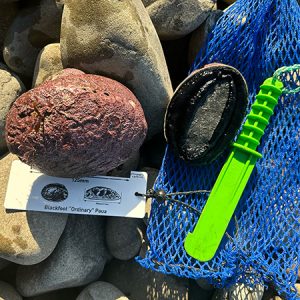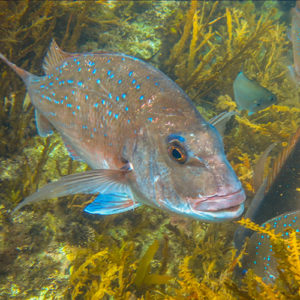Snapper is the North Island’s favourite inshore species and are hotly pursued by both recreational and commercial fishers. The Bay of Plenty has sometimes been labelled ‘the Bay of Empty’ when fishing efforts have been consistently poor. The question many people ask themselves – is it over fishing and a result of poor fishery management or are there other factors that affect the population beyond what humans can do?

One of the debates amongst recreational fishers on the topic of fishery management is not taking the large breeding sized fish during spawning season. It seems intuitive to avoid or release large snapper that are in spawning mode and surely this step can only benefit the fish stocks.
This is a question that requires proper scientific study as it is not as straightforward as it seems. Environmental factors can play an instrumental role in the seasonal survival of juvenile snapper. During a warm autumn, conditions favouring spawning, growth, and survival may mean 21 million fish may make it through, compared to a poor autumn when only 3 million may survive. How
How many large breeding snapper would need to be spared to make an impact on stocks comparable to seasonal variation?
The effort to create appropriate policy and then execute and police that policy has to be weighed up against the eventual benefits. Could that resource and effort yield better results if it were invested in curbing destructive commercial practices such as bottom trawling and educating recreational fishers on best practice fishing?
We know that bottom trawling is a destructive archaic form of fishing that has long-term negative effects on the whole marine system. The benthic ecosystem hosts an environment to harbour juvenile snapper and a plethora of snapper food, but of course not just for snapper, but many other species. Not all commercial fishing is evil; longlining by comparison, is a more selective way of targeting snapper without the habitat destruction.
In the Hawkes Bay, where conditions are worse and tension between recreational and commercial fishers is mounting, there is a move to have commercial fishing pushed out to the 100m line. Will it get that bad in the Bay of Plenty back yard? It maybe an inevitable scenario if MPI don’t do their job properly. Their lack of leadership and ‘hands-off’ approach to managing the Hawkes Bay fishery has been unacceptable with dire consequences.
These two elements in the Hawkes Bay debacle – MPI’s poor job and the effects of trawling – appear to be the major factors to blame for a slowly declining fishery.
How do we rectify these issues?
The single simplest solution promoted by LegaSea is a Commission of Inquiry into the QMS. Along with fish dumping, under-reporting and the capture of a government department by industry, there will no doubt be more to come if the Inquiry can be launched and the truth laid bare.
What can recreational fishers do?
Well, the first thing to do is tell your local MP how we need a Commission of Inquiry into the QMS but on a more positive note, there are fishing techniques fishers can adopt to also help grow fish stocks.
Simple practices such as avoiding the capture of undersized snapper in the first place will help more fish grow and reproduce. This can be done by favouring techniques such as lure fishing instead of bait fishing, or using large hooks (size 7/0 or larger) when bait fishing. Circle hooks are also an excellent choice when bait fishing and in some fisheries in the US, it is illegal to use anything except circle hooks when targeting certain reef species.
Fishery management can be complex but there are simple effective solutions available now if people care enough to do their part. Visit the FishCare website for more helpful fishing tips.





